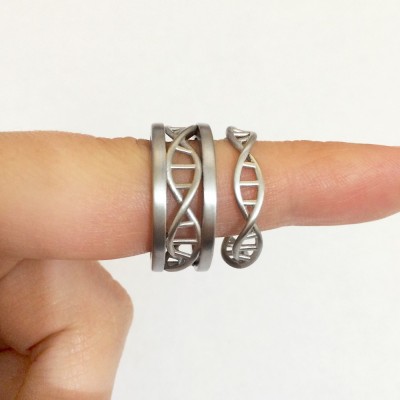
-Anu Acharya, Mapmygenome
A very popular test called CMA that stands for Chromosomal microarray is usually advised by medical doctors (mostly paediatricians or obstetricians) for children with developmental issues, birth defects, Autism Spectrum Disorder (ASD), etc. or for couples during pregnancy, after a pregnancy loss (either miscarriage or termination), or post-delivery to test the newborn.
This blog is to simplify it for those who need to know what it is all about. As you probably know, we humans have 23 pairs of chromosomes, one pair each inherited from each of our parents, making it a total of 46 chromosomes. However, sometimes, random errors during the cell division process can result in an entire chromosome missing (the scientific word for this is ‘monosomy’), making the total number of chromosomes 45. In some cases, an error in cell division results in an extra chromosome (this is called a ‘trisomy’) and a total number of 47 chromosomes. This phenomenon of having one (or more) extra or missing chromosomes is usually a random, sporadic event, and is called an ‘aneuploidy’. A normal number of 46 chromosomes (aka ‘euploidy’) typically represents a normal and appropriate amount of genetic material contained in them and is critical to normal development. A picture of the chromosomes (called a ‘karyotype’ test), allows us to visually count the total number of chromosomes and it is reassuring when such a test comes back normal with 46 chromosomes organized as 23 pairs. So a normal total number of chromosomes evidenced by a normal karyotype means everything is fine, right? Wrong.
Sometimes, within the 23 pairs of chromosomes that appear normal on a karyotype, there may be missing or extra parts of a chromosome. These missing or extra or portions, intuitively called ‘deletions’ and ‘duplications’ respectively, are too small to be picked up on a simple karyotype but may still have a significant impact on healthy development. It makes sense that, for a lot of children with developmental issues or multiple physical anomalies at birth, a karyotype test comes back normal. Understandably such a normal genetic test result from karyotyping can be frustrating for doctors and families who seek genetic testing for the purpose of finding a diagnosis. Here is where CMA is an invaluable and inexpensive diagnostic tool that ought to be part of the first line of genetic testing according to authorities in medical genetics and genomics. CMA is a technologically sophisticated test, more advanced than a karyotype, and capable of detecting deletions and duplications that are missed in karyotyping.
CMA uses a microarray that allows us to look at 700,000 markers that help us check if there is a difference between what is expected and the patient sample. In the next blog, we will take a look at some case studies so that it is easier for a physician to interpret.
What
CMA looks for extra (duplicated) or missing (deleted) chromosomal segments, called copy number variants (CNVs) or copy number changes ( CNCs) including –
- Some Microdeletions and microduplications of chromosome segments that may be difficult to see under a microscope but can be identified by genetic analysis by looking at the number of copies missing.
- When the number of chromosomes is not 23 pairs but more or less. It can cause abnormalities like Down syndrome. So instead of 2 of each chromosome, you can have 1 or 3. Technically known as monosomy or trisomy.
- When parts of the chromosome get rearranged, known as translocations.
- Excessive homozygosity, suggestive of risk for recessive disease or imprinting disorders.
- Triploidy and other duplications of the entire chromosome set (tetraploidy, etc.)
- Another feature is mosaicism ( remember those tiles…) This is essentially a mix of normal and abnormal cells and this can be tested by CMA.
However, the CMA has a few limitations. It is unable to detect certain kinds of disease-causing genetic changes. For instance:
- It cannot detect point mutations which are basically tiny changes in the sequence of a single gene. These can be detected by NGS-based tests such as Exome Sequencing.
- Really tiny duplications and deletions of DNA segments within a single gene
- Balanced chromosomal rearrangements (balanced translocations, inversions) as CMA is designed to detect chromosomal gains and losses (deletions and duplications, aka ‘DELDUPS’), and not rearrangements. For these, karyotyping remains the gold standard genetic test.
- Also, it cannot detect mosaicism below 20 %
In such cases, genetic counseling is strongly recommended in order to help doctors make a well-rounded assessment of what the test results mean in light of clinical features a patient may be demonstrating. Oftentimes, while a genetic diagnosis is invaluable and the desired outcome of genetic testing, clinical management may be possible based on presenting symptoms. A genetic counselor has the medical genetics expertise to identify and make referrals to specialists who can work together as part of a multispecialty team for the appropriate medical management of an individual.
Who
As a precautionary measure, CMA can be done by many but it may be most useful when we find individuals who show
- Impaired physical development (height, weight, head circumference)
- Delayed milestones (holding neck upright, sitting, crawling, speech)
- Intellectual disability (previously referred to as ‘mental retardation’)
- Social developmental disorders including Autism Spectrum Disorders, ADD, ADHD, etc.
- Pediatric muscle weakness or muscle rigidity
- Seizures, epilepsy, neurological symptoms
- Multiple congenital anomalies, including dysmorphic facial features, cleft lip, cleft palate, extra or missing toes/fingers,
A genetic counselor would be the right person to discuss this with to decide whether CMA or an alternate test may be most appropriate, and arrive at the most effective genetic testing strategy. A genetic counselor would also be available to help physicians accurately interpret the report and to help couples/families understand what the report means for their child’s health, medical management, and to make an informed plan for any future pregnancies.
Why
CMA can be useful for patients trying to understand issues with previous pregnancies and also get answers to unexplained medical conditions in their family
Another value is to influence the management of the conditions in a better way including lifestyle interventions.
It comprehensively examines all chromosomes for gains and/or losses that may have an impact on health and is a powerful tool and can be the first line of testing for genetic diagnosis.
It helps families plan their pregnancies and also screen other at-risk family members.
When
- Prenatal: This would be during pregnancy around 8-13 weeks so that any decisions about pregnancy management (continuation or termination) may be made in an informed manner.
- Postnatal: After delivery on signs of any developmental delays, ASD, seizures, birth defects, multiple congenital anomalies, neuromuscular illness, dysmorphic features, etc. in order to achieve a genetic diagnosis for appropriate medical management of the child.
- POC ( product of conception): The POC could be tested in cases of miscarriage, stillbirth, or medical termination for the purpose of genetic diagnosis to inform recurrence risks to future pregnancies.
Where
These tests are available with companies like Mapmygenome. The test can be ordered online along with a doctor referral ( www.mapmygenome.in ) or at your doctors clinic or hospital.
The link to order is https://mapmygenome.in/chromosomal-microarray-analysis






